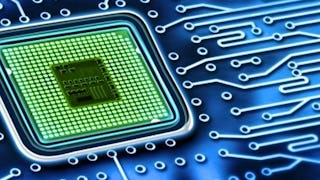A modern VLSI chip has a zillion parts -- logic, control, memory, interconnect, etc. How do we design these complex chips? Answer: CAD software tools. Learn how to build thesA modern VLSI chip is a remarkably complex beast: billions of transistors, millions of logic gates deployed for computation and control, big blocks of memory, embedded blocks of pre-designed functions designed by third parties (called “intellectual property” or IP blocks). How do people manage to design these complicated chips? Answer: a sequence of computer aided design (CAD) tools takes an abstract description of the chip, and refines it step-wise to a final design. This class focuses on the major design tools used in the creation of an Application Specific Integrated Circuit (ASIC) or System on Chip (SoC) design. Our focus in this first part of the course is on key Boolean logic representations that make it possible to synthesize, and to verify, the gate-level logic in these designs. This is the first step of the design chain, as we move from logic to layout. Our goal is for students to understand how the tools themselves work, at the level of their fundamental algorithms and data structures. Topics covered will include: Computational Boolean algebra, logic verification, and logic synthesis (2-level and multi-level).

Saving $160 on access to 10,000+ programs is a holiday treat. Save now.


(556 reviews)
Skills you'll gain
- Design Software
- Mathematical Software
- Algorithms
- Application Specific Integrated Circuits
- Computer Programming Tools
- Digital Design
- Computational Logic
- Computer Architecture
- Computer Engineering
- Systems Design
- Verification And Validation
- Software Development Tools
- Theoretical Computer Science
- Data Structures
- Debugging
Details to know

Add to your LinkedIn profile
8 assignments
See how employees at top companies are mastering in-demand skills

There are 6 modules in this course
In this module you will become familiar with the course and our learning environment. The orientation will also help you obtain the technical skills required for the course.
What's included
1 video2 readings1 assignment4 programming assignments1 plugin
In this module, we will introduce advanced Boolean algebra math concepts that make it possible to take a "computational" approach to Boolean algebra.
What's included
6 videos2 readings
Week 2 introduces two powerful and important representation techniques that allow us to do SERIOUS computational Boolean algebra, on industrial-scale designs.
What's included
7 videos2 readings1 assignment1 programming assignment
In Week 3, we will move from "representing" things to "synthesizing" things. In this case, synthesis means "optimization", or maybe the word "minimization" is more familiar from hand work with Kmaps or Boolean algebra.
What's included
8 videos2 readings1 assignment
You now know that to factor a multi-level network to reduce its complexity, you must look at the kernels and co-kernels. You know how to "get" these for any node. But -- what do you do with a big network to actually FIND the right common divisors? This is called EXTRACTION. We then look at a new opportunity to optimize multi-level logic: Don't Cares. In simple designs, we usually regard Don't Cares as "impossible inputs" -- things that just do not happen, so we can choose the value the hardware creates to minimize the logic.
What's included
8 videos2 readings2 assignments1 programming assignment
There is no new content this week. Instead, you should focus on finishing the last problem set and completing the Final Exam.
What's included
3 assignments1 plugin
Instructor

Offered by
Explore more from Algorithms
 Status: Preview
Status: Preview
University of Illinois Urbana-Champaign
 Status: Free Trial
Status: Free Trial Status: Free Trial
Status: Free Trial Status: Free Trial
Status: Free Trial
Why people choose Coursera for their career




Learner reviews
556 reviews
- 5 stars
74.10%
- 4 stars
20.68%
- 3 stars
2.87%
- 2 stars
0.89%
- 1 star
1.43%
Showing 3 of 556
Reviewed on Jul 15, 2020
Excellent course in VLSI tools design, that covers most of the basic algorithms and basic idea of tools.
Reviewed on Aug 26, 2023
Excellent course with lots of lots of new things to learn. Mandatory for people doing research in VLSI and digital circuits.
Reviewed on Aug 13, 2017
Really Enjoyed taking the course. The course gives interesting insights about how various EDA tools work and algorithms that make it possible.

Open new doors with Coursera Plus
Unlimited access to 10,000+ world-class courses, hands-on projects, and job-ready certificate programs - all included in your subscription
Advance your career with an online degree
Earn a degree from world-class universities - 100% online
Join over 3,400 global companies that choose Coursera for Business
Upskill your employees to excel in the digital economy
Frequently asked questions
To access the course materials, assignments and to earn a Certificate, you will need to purchase the Certificate experience when you enroll in a course. You can try a Free Trial instead, or apply for Financial Aid. The course may offer 'Full Course, No Certificate' instead. This option lets you see all course materials, submit required assessments, and get a final grade. This also means that you will not be able to purchase a Certificate experience.
When you purchase a Certificate you get access to all course materials, including graded assignments. Upon completing the course, your electronic Certificate will be added to your Accomplishments page - from there, you can print your Certificate or add it to your LinkedIn profile.
Yes. In select learning programs, you can apply for financial aid or a scholarship if you can’t afford the enrollment fee. If fin aid or scholarship is available for your learning program selection, you’ll find a link to apply on the description page.
More questions
Financial aid available,



